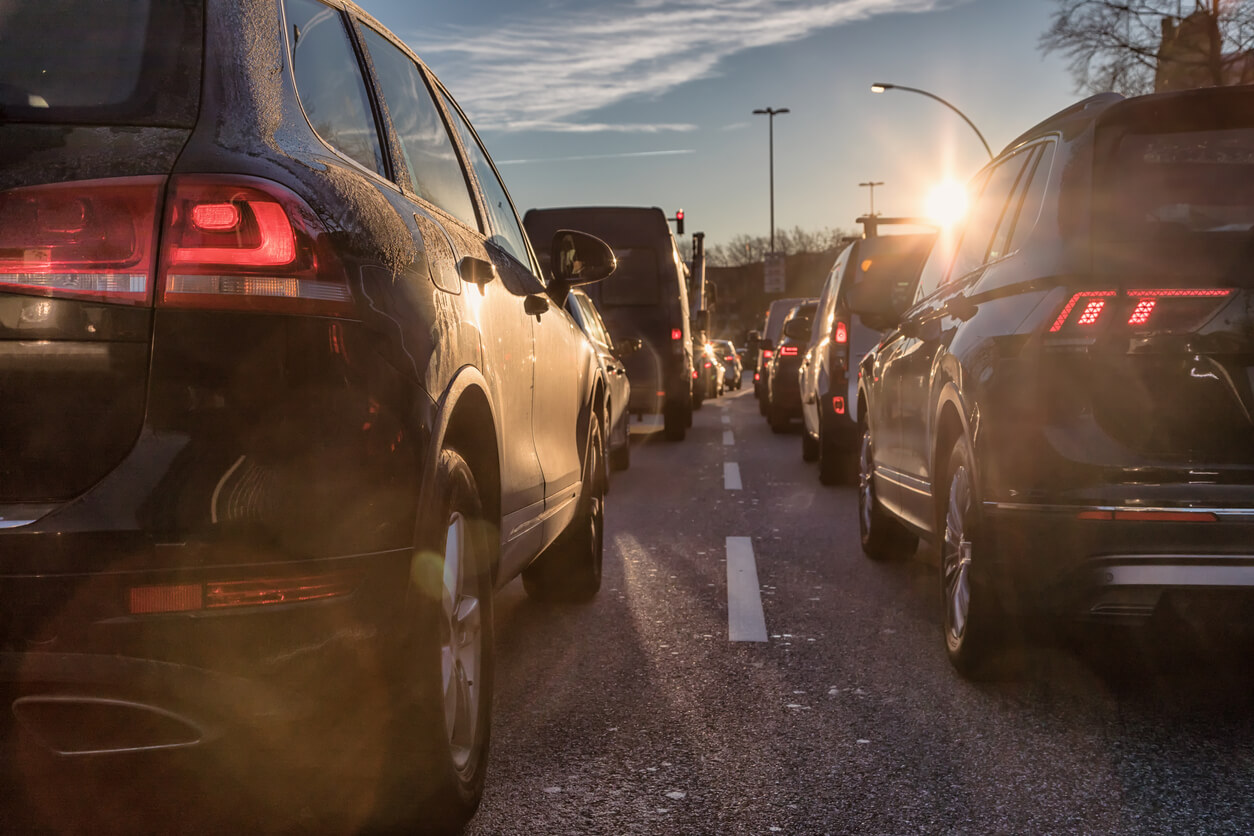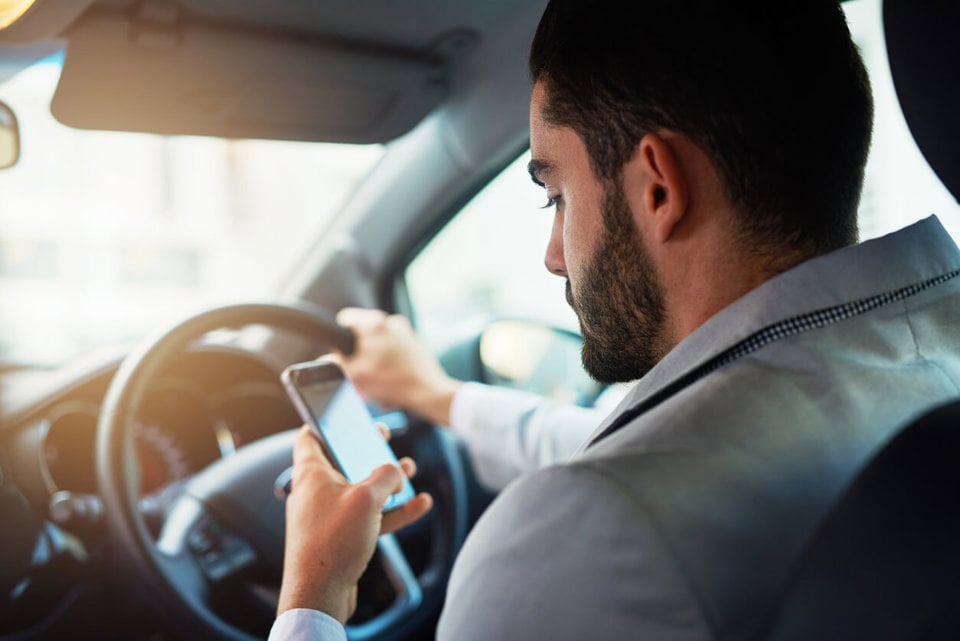Mobile phone use while driving is rife, yet prosecutions have declined dramatically over the past decade.
New research from The AA Charitable Trust reveals that using a mobile phone behind the wheel is still a common occurrence, seen by 93% of drivers.
However, the number of fixed penalty notices for using a phone has decreased from 162,400 in 2011 to 19,700 last year.
In 2022, in addition to the 19,700 fixed penalties some 4,336 were convicted at court with an average fine of £197.
It is estimated there has been a 20% decrease in dedicated traffic police over the past decade.
According to Government research when it comes to the perceived likelihood of being caught by the police, about half of motorists thought it is unlikely they will get caught using a handheld mobile phone while driving/riding (49%).
The AA Charitable Trust says that new cameras, using AI, aimed at catching drivers using their mobile phone behind the wheel are proving successful in police trials so should be rolled out as soon as practical.
Kate Goldsmith's 11-year-old daughter Aimee was killed when HGV driver Tomasz Kroker, scrolling through music on his phone, ploughed into the back of the car she was in.
The court heard that Kroker had barely glanced at the road for 1km. He had spent 45 seconds looking at the phone’s screen so that when the traffic had slowed, he was unable to respond, smashing into the vehicle in front at 50mph, causing the fatal domino effect.
He was convicted of causing death by dangerous driving and sentenced to 10 years in prison, with the judge saying his attention had been so poor ‘he might as well have had his eyes closed’.
A dash cam video showed him oblivious of the danger until it was too late.
Goldsmith has since campaigned with the AA Trust for greater awareness of the consequences and stricter penalties for using phones at the wheel.
She said: “The use of mobiles at the wheel has been illegal for 20 years. My daughter Aimee died because of such actions more than seven years ago, yet we still see people on the phone daily.
“I have campaigned for years to highlight the dangers of mobile phone use. I even went out with road traffic officers, telling my story to the drivers they stopped. I thought, if I can just save one person, then that’s good enough.
“But it’s not good enough. Surely, we can do better than that?
“Take it from me the consequences of such actions don’t bear thinking about and never disappear.”
In 2020, 17 people were killed and 499 injured in road traffic collisions in Great Britain where the driver was using a mobile phone. This compares with 55 deaths and 3,119 injuries in collisions where ‘distraction in vehicle’ was recorded as a contributory factor.
In 2021, the proportion of van drivers using a phone (1.9%) was nearly double that for car drivers (0.8%). This was a similar pattern to the previous surveys in 2017 and 2014.
The highest proportion of drivers using a hand-held mobile phone whilst driving in 2021 was for heavy goods vehicles (2.2%).
Edmund King, director of the AA Charitable Trust, said: “It is tragic that 20 years on people are still being killed and seriously injured on our roads due to selfish drivers using their phones.
“Despite high profile campaigns from ourselves, Government and others, the use of phone is still not as socially unacceptable as drink driving.
“This is despite our previous research that you're twice as likely to crash text driving as you are drink driving. You wouldn't drink and drive. Don't text and drive.”
Jon Oliver, managing director of Garmin UK & Ireland, believes that the new research details an "eye-opening and frank picture" of mobile phone use while at the wheel.
“We wholeheartedly back Kate’s campaign to reduce the number of lives lost on our roads and believe the number of incidents involving mobile phone use is far too high," he said.
Using AI technology to catch drivers

New cameras aimed at catching drivers using their mobile phone behind the wheel have proved successful in police trials.
The technology, which can also detect whether drivers are wearing a seatbelt, was initially rolled out on selected routes across Devon and Cornwall from October, last year.
During the first couple of weeks, almost 600 people were caught by police not wearing seatbelts on Devon and Cornwall roads.
The cameras caught 590 people not wearing seatbelts and 40 people driving while using a mobile phone.
The Acusensus system is equipped with multiple cameras which record footage of passing motorists.
Images captured by the cameras are processed using artificial intelligence (AI) to determine if motorists were using a handheld mobile phone or if drivers and passengers were without a seat belt. It can also determine the speed a vehicle was travelling at the time.
Any images in which a potential offence is detected are then reviewed. If an offence has been correctly identified, the driver will either be sent a warning letter or a notice of intended prosecution, depending on the severity.
Changing mobile phone legislation
In December 2003, legislation was introduced making it illegal to use a hand-held mobile phone while driving on the road.
Drivers caught using a hand-held mobile phone whilst driving may be issued with a fixed penalty notice with points on the driving licence and a fine.
In February 2007, the penalty for using a mobile phone while driving increased from a £30 fine to a £60 fine and three driving licence points.
These fines increased to £100 in 2013 and then again to £200 and six penalty points in March 2017, with a maximum fine of £1,000 (£2,500 if driving a lorry or bus) if the case goes to court.
If a case goes to court, the driver or rider may be disqualified from driving or riding.
In 2022, a loophole in the law where you can drive, take photos, videos or play games was closed.
If you drive and use a handheld device in any capacity, you could receive a £200 fine and six penalty points on your licence.
With six points, drivers who passed their test in the last two years, will lose their licence, and need to re-take the test.





















Login to comment
Comments
No comments have been made yet.